The Foundation of success Objectives and Strategy
»Clariant’s five strategic pillars reinforce its overall objectives and financial targets with a strong guiding framework, giving direction and focus to the organization.«
»Clariant’s five strategic pillars reinforce its overall objectives and financial targets with a strong guiding framework, giving direction and focus to the organization.«
To focus Clariant as a whole and all its business areas on value creation, overall objectives and financial targets are complemented by material sustainability topics, supported with a five-pillar corporate strategy, and broken down to the Business Unit level.
29%cash flow increase to
CHF 646 million
Clariant has defined overall objectives and financial targets to articulate the company’s vision to become the globally leading company for specialty chemicals and to stand out through above-average value creation for all stakeholders. These objectives and financial targets pinpoint innovation, growth, return on investment, cash flow, industry positioning, investor, employee, and customer recognition, and sustainability.
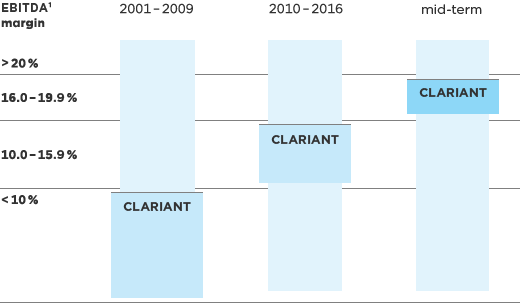
A key financial target is to achieve an EBITDA margin before exceptional items of 16 – 19% in the medium term. Clariant has made significant progress in that direction over the past few years, and against the backdrop of challenging economic conditions the increase of the EBITDA margin before exceptional items from 14.7% in 2015 to 15.2% in 2016 is considered a success.
The full set of company-wide overall objectives and financial targets is summarized in the table below. The table groups them with regard to the brand value – Performance, People, and Planet – they mainly support and the stakeholder group or topic they most closely relate to.
| Overall Objectives and Financial Targets | |||
|
Performance | |||
|---|---|---|---|
|
Financials:
Innovation:
|
|||
|
People | |||
|
Customers:
Employees:
Shareholders:
|
|||
|
Planet | |||
|
Solutions:
|
|||
Complementing these overall objectives and financial targets when making strategic decisions, Clariant also considers relevant sustainability topics as part of the objective setting. To determine the most material topics and a number of slightly less material but still significant topics, a materiality assessment conducted in 2013 and refreshed in 2015 determined the level of impact of potential sustainability topics on the company and on its stakeholders.
The materiality assessment also showed the significance of external societal trends that Clariant has a limited ability to influence on its own, but that represent important market drivers for long-term strategic consideration. With the growth of overall global wealth, consumption patterns are shifting. This shift is leading to growing demand for beauty, health, and lifestyle solutions. In addition, demographic changes such as the growing and aging world population are increasing demands related to food security, mobility, and safety. Lastly, increased urbanization is requiring innovative solutions in construction, energy production and use, and environmental protection. Clariant products and services offer a broad spectrum of solutions that respond to these global trends.
A key element of assessing the significance of topics was the first Sustainability Dialog 2015 in Frankfurt, where more than 150 representatives from industry, the media, the capital market, and public politics participated. The 2016 Sustainability Dialog revisited these topics when about 200 participants gathered in Shanghai. In 2017, Clariant plans to work with its stakeholders for the next iteration of the materiality assessment.
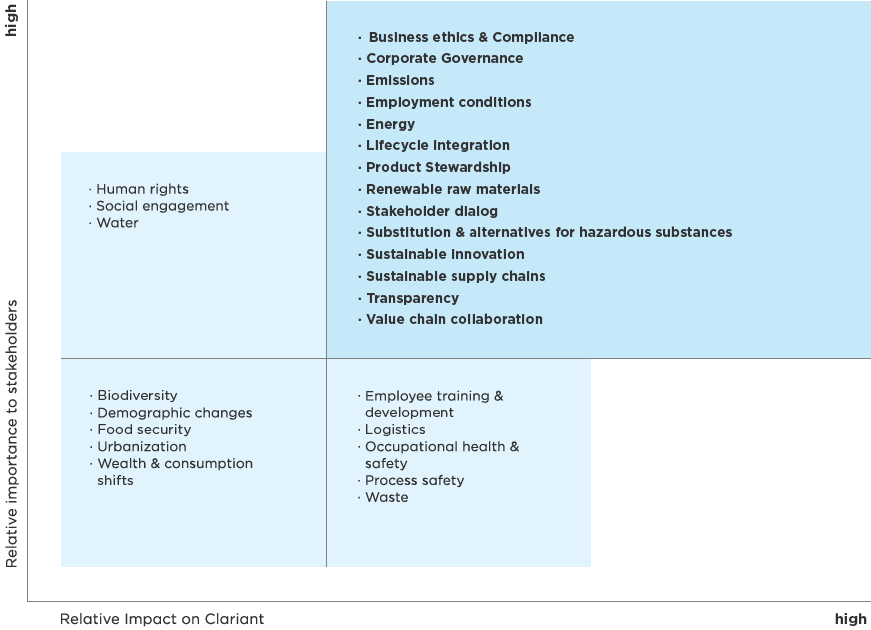
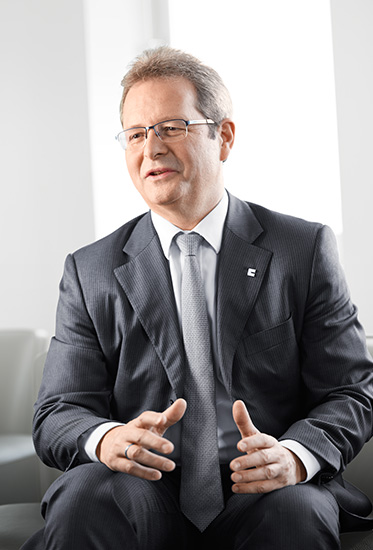
In April 2016, Christian Kohlpaintner relocated to Shanghai to give the Executive Committee presence in the region to drive strategic execution and to accelerate growth. He discusses the increasing strategic role China plays for Clariant.
Christian Kohlpaintner Living in China has been the most interesting and rewarding experience. China is extremely dynamic, young, and the rapid adoption of new technologies is very visible.
Even with the current decline in growth, described as the »New Normal«, China’s economy is expected to grow between 5.5% and 6.5% annually. The chemical market in China is by far the largest in the world and will make up two-thirds of the total growth of the global chemical market over the next five years. A strong local presence in China is essential for our strategic pillar of intensifying growth.
»The chemical market in China is by far the largest in the world. It will also make up two-thirds of the growth of the global chemical market over the next five years.«
In 2016 we’ve been very busy putting China at the top of the agenda. We were developing solid strategies to bring China from »fringe to core« in our business ambitions and we are willing to make bold moves.
The Shanghai One Clariant Campus (OCC) opening in the beginning of 2019 will also encompass an innovation center allowing us to develop products from China for China but also for the world. To be able to compete in China this is a must for Clariant.
Also, for the first time, we have clearly defined China objectives for each Business Unit in 2017, with specific people accountable for delivering those plans. In a way, China will be treated similar to a Business Unit, with its own targets for profitability, growth and so on. The targets are ambitious but I’m confident that we’ll get traction because performance management, roles and responsibilities, incentives, and resources are aligned. And the accomplished growth of about 7% in 2016 is a good starting point.

To summarize how to reach Clariant’s overall objectives and financial targets, five strategic pillars have been developed as guiding themes to orientate and focus strategy implementation.
Composed for the first time in 2010 these strategic pillars were reviewed and refined in 2016, with innovation seen as the starting point and sustainability the subsequent guidepost for future-oriented value generation. Repositioning the portfolio, intensifying growth, and increasing profitability continue to be vital to further strengthen the focus on value generation for all stakeholders.
Clariant’s Business Units further detail out these five pillars for their respective BU strategies to a level of specific measures to ensure clear guidance on what matters most to achieve the respective financial targets of each BU.
Clariant Excellence (CLNX) has been developed into the Business Excellence program, comprising Innovation Excellence, Commercial Excellence and Operational Excellence, to support the Business Units in their strategy execution.
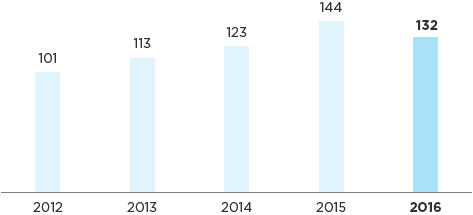
CLNX supports systematic value creation along the entire value chain, starting from ideation for new products, services or business models, defining commercial strategy to ultimately ensuring effective and efficient production and delivery of finished goods to our customers. In total more than 1 000 CLNX projects were active in 2016, resulting in an additional net benefit of CHF 132 million. Over the past five years, the positive effects just from cost savings and additional margin enhancement have accumulated considerably to approximately CHF 613 million with more than CHF 340 million of hard cost benefit.
4 150Training for Excellence
To ensure systematic capacity building, more than 4 150 employees or roughly 24 % of the workforce were trained in Clariant Excellence Programs by the end of 2016.
People Excellence engages Clariant employees, among others, in leadership development and functional capability building (see also chapter Employees and Leadership Culture). More than 4 150 Clariant employees or roughly 24% of the total workforce were trained using the Clariant Excellence Programs by the end of 2016. Systematic capability building is a cornerstone of anchoring the Clariant Excellence tool set and mind set to ensure the sustainability of the Clariant Excellence programs.
To monitor and ensure strategy execution and the achievement of the company’s overall objectives and financial targets Clariant’s Executive Committee (EC) conducts an Annual Performance Cycle. A formal Strategy Review in September of each year, stress-testing the validity of the assumptions underlying a three year BU Strategy Cycle, precedes the annual Objective Discussion for the then following year. The annual Objective Discussion operationalizes financial targets and the underlying strategic and tactical implementation for each year. Business Reviews are being conducted every quarter to ensure performance meets performance expectations, and supportive actions are being discussed and decided where required.
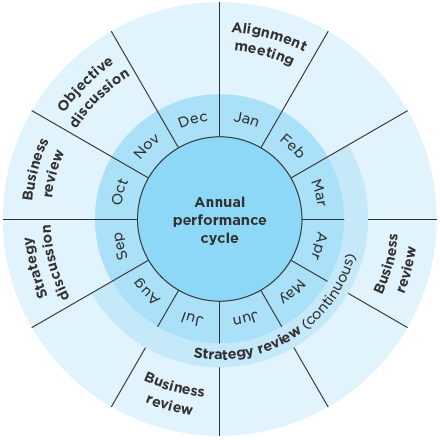
In 2013 Clariant adjusted its reporting segments and grouped its businesses with similar end-user markets and growth drivers into four distinct Business Areas: Care Chemicals, Catalysis, Natural Resources, and Plastics & Coatings. VIEW ENTIRE GLOSSARY
Stakeholders are people or groups whose interests are linked in various ways with those of a company. They include shareholders, business partners, employees, neighbors, and the community. VIEW ENTIRE GLOSSARY
Economic indicator representing the operational net inflow of cash and cash equivalents during a given period. VIEW ENTIRE GLOSSARY
The EBITDA margin is calculated based on the ratio of EBITDA to sales and shows the return generated through operations from sales before depreciation and amortization. VIEW ENTIRE GLOSSARY
Exceptional items are defined as non-recurring costs or income that have a significant impact on the result, for example expenses related to restructuring measures. VIEW ENTIRE GLOSSARY
Earnings before interest, taxes, depreciation, and amortization. VIEW ENTIRE GLOSSARY
Clariant’s three brand values, under which the different capitals considered in integrated reporting have been categorized in this report: Performance (financial and intellectual capital), People (human and relationship capital), and Planet (manufactured and natural capital). VIEW ENTIRE GLOSSARY
ROIC is the total return on assets or the return on capital invested by a company. It is calculated as the ratio of earnings before interest expenses, less adjusted taxes and invested capital (total capital employed). ROIC clarifies the return on capital with which a company is working. VIEW ENTIRE GLOSSARY
Stakeholders are people or groups whose interests are linked in various ways with those of a company. They include shareholders, business partners, employees, neighbors, and the community. VIEW ENTIRE GLOSSARY
Management body of joint stock companies; at Clariant the Executive Committee currently comprises four members. VIEW ENTIRE GLOSSARY
Clariant Excellence is an initiative launched in March 2009 with the aim of establishing a culture of continuous improvement. The initiative is based on a change in mindset among all employees and at all levels of the company. It aims to improve competitiveness through gains in efficiency and to create added value. The four elements of Clariant Excellence are: Operational, Commercial, People, and Innovation Excellence. VIEW ENTIRE GLOSSARY
The value chain describes the series of steps in the production process, from raw materials through the various intermediate stages to the finished end product. VIEW ENTIRE GLOSSARY
Clariant Excellence is an initiative launched in March 2009 with the aim of establishing a culture of continuous improvement. The initiative is based on a change in mindset among all employees and at all levels of the company. It aims to improve competitiveness through gains in efficiency and to create added value. The four elements of Clariant Excellence are: Operational, Commercial, People, and Innovation Excellence. VIEW ENTIRE GLOSSARY